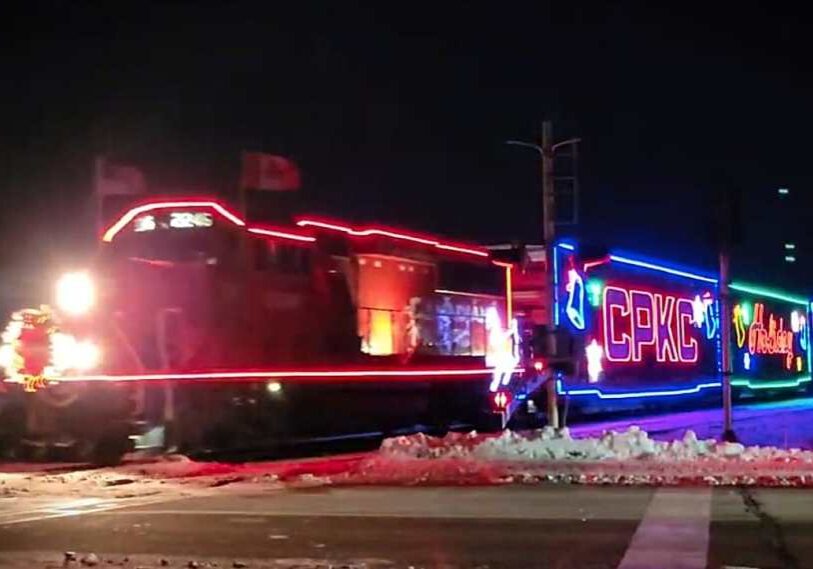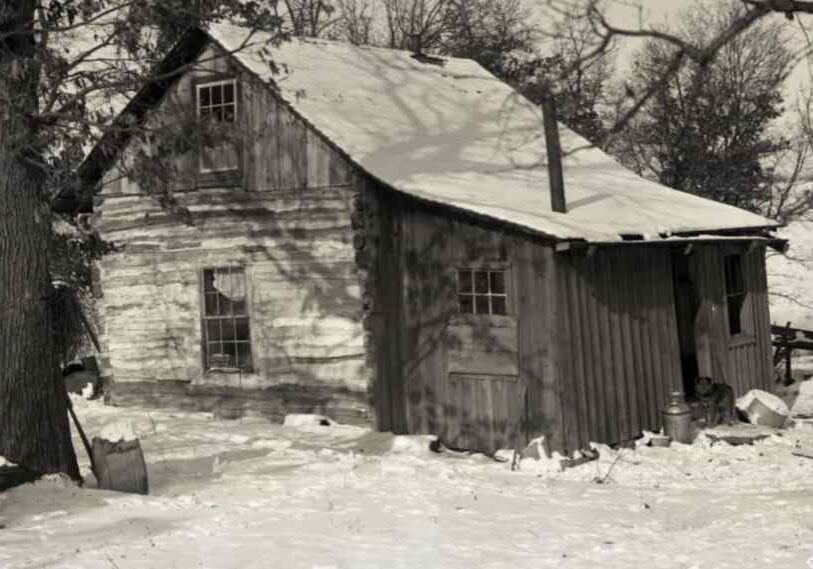Driftless Center a Must Stop on the Great River Road
From Minnesota to Louisiana, travelers along the Mississippi River learn from observation and interpretation

ALLAMAKEE COUNTY, IOWA— Liz Grimes and her niece, Kelly Buss, were having a great time looking at a very large waist-high, horizontal picture of the Driftless area, finding places they had been.
The Twin Cities women had exited Southeast Minnesota, driving south to see a baseball game in Cedar Rapids, when they happened upon a new, tall building with a large deck overlooking the Mississippi River just south of Lansing, Iowa.
They stopped, turned around and entered the Driftless Area Education and Visitors Center.
It was “fate,” they said. They were just meant to find that building.
When they walked in, they saw the big (maybe 15-foot-long) photo/map, one split by the Mississippi River, so visitors can walk through the heart of the Driftless. It gives them a realization of just how big the Driftless really is.

Kelly Buss (left) and Liz Grimes of the Twin Cities look at an aerial map of the Driftless Area, encompassing parts of Minnesota, Wisconsin, Iowa and Illinois. (Photo by John Weiss)
Grimes said she never knew about the region until they saw a PBS show called Decoding the Driftless. “It was amazing,” she said.
Visitors Janice and Don Burgart of New Hampton, Iowa, said they were aware of the Driftless region of Southeast Minnesota, Northeast Iowa, Southwest Wisconsin, with a bit of Illinois. Though she grew up farther west in much flatter farmland, Janice and a sibling and their parents would visit the Upper Mississippi River area to fish.
As for why they came to the center, the Burgarts said the day was rainy so they looked up what to do in Lansing and there appeared information about the center. Let’s go, they said, and they drove over. They really didn’t know what to expect.
“Just kind of got in here, learning about what is native to the area,” Janice said.
The display of furs of different animals found in the Driftless caught their attention, especially Don who liked feeling the raccoon. He had a pet raccoon when he was young. They walked to the upper level with displays of the Oneota and other native cultures, about harvesting millions of clams for buttons, of trappers and commercial fishermen.
Don said he especially liked seeing the honeybee display. “I just love watching honeybees,” he said.
Janice said she liked seeing an exhibit to find how well you know native fish. “I got some right,” she said. They plan to bring two of their grandchildren there.

Old commercial fishing boats hang from the ceiling at the Driftless Area Education and Visitors Center in Lansing, Iowa. (Photo by John Weiss)
Thousands have visited the center since its 2017 opening
Seeing live animals and touching the furs are two of the biggest attractions at the center, said Becca Hefflefinger, assistant naturalist who was at the information desk reading a book about Iowa fish. The center receives more than 14,000 visits annually – many of whom are Great River Road travelers.
“Many happen to be driving past and see the center because it’s a giant building on the side of the river with a large deck. But here’s a neat part – many come for travel information and are pulled in by the displays and get a Driftless education,” Hefflefinger said.
“They see all the openness and boats hanging from the ceiling and they get drawn in to all the information we have.”
According to Executive Director Ross Geerdes, the combination of travel and education is what the Driftless Center is all about. The Allamakee County Conservation Board owns it and all employees work for the board. Staff also work at the other 27 conservation facilities, including boat accesses (one is within a quarter mile of the center), and naturalists go out to local schools to give programs.
Geerdes says that the county’s rugged bluffs and trout streams is what brings people to Allamakee County. “Tourism is a big draw here in northeast Iowa,” he remarked. The county has about 13,000 residents.
Because of the natural resources, Allamakee County, like its Southeast Minnesota neighbors to the north, attracts trout anglers to its 50 streams with brown and brook trout that spawn there and rainbow trout that are stocked, he said.
Many visitors are from the Quad Cities, Des Moines and Wisconsin, as well as Minnesota. Many young people come to the center with school groups.
The center cost about $3.7 million and was paid for with grants and county funding. “Iowa has about 70 such county interpretive centers, each focusing on what makes that county unique,” Geerdes said.

These Maize cobs from centuries ago were harvested by Native Americans showing how small original corn was. (Photo by John Weiss)
Exhibiting critters, culture and community
The center has roughly 10,500 square feet on its three floors, with the lower one for hosting meetings, and has a large aquarium with local fish.
Its main floor displays include furs, some live animals such as snakes and turtles, mounted animals including deer heads and even a flying squirrel. The upper level focuses more on the history of the area, beginning with several displays of how Native Americans lived along the Mississippi for at least 10,000 years.
One striking display shows artifacts with several small dried-up pieces of vegetation. They are maize cobs from many centuries ago, with maybe four rows for kernels, showing just how small the original maize was.
Early Europeans were fur trappers followed by loggers and then commercial fishing.
A huge part of the use of the river about a century ago was harvesting mussels (also called clams) by the tens of millions to be cut into buttons sold throughout the world. The industry waned and died because of overharvest, pollution and the introduction of plastic buttons.

Early Europeans engaged in commercial fishing, harvesting mussels (clams) for the button industry. These hooks were used to drag the river bottom unearthing clams. (Photo by John Weiss)
A big industry in the area many decades ago was harvesting ice in winter so it could be stored for refrigeration in summer. Lansing once had 11 such businesses. The center demonstrates ice harvesting each winter.
The goal of the center isn’t a comprehensive display of all sides of the Driftless, Geerdes said. “We knew we couldn’t cover everything in depth. But the center can give people some basic information about the region and let them explore more on their own.”
Read more about the Driftless region in these Root River Current stories:Contributor
John Weiss






